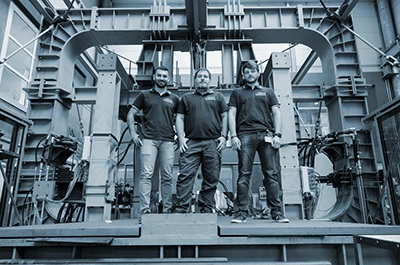
The need to continuously inspect transport infrastructures is becoming crucial for the correct operation of services and, in this context, the railway infrastructure cannot be outdone. Data collection activity is often expensive, both in terms of man hours and operating costs, as it is usually carried out with trains similar to those used for passenger transport.
Hence the idea of RFI (Italian Railway Network, FS group) to develop a light vehicle capable of carrying out reconnaissance operations automatically and autonomously. The design of the vehicle in terms of layout, suspension system and powertrain was completely entrusted to the Department of Mechanical Engineering of Politecnico di Milano. Activities related to acquisition and processing images and mission planning algorithms were instead entrusted to other departments / universities.
The layout of the vehicle was defined both in order to contain the overall dimensions, i.e. in compliance with the limit shape imposed by the standards, and to contain the aerodynamic resistance, hence to reduce the overall amount of energy stored in the on-board batteries.
The secondary suspension system has been designed both to ensure correct driving dynamics and to ensure correct isolation from vibrations, especially considering the stringent requirements of the cameras installed in the box.
The traction system has been designed to ensure a high level of availability obtained thanks to both the redundancy of the main components and a diesel-electric generation system placed on board the vehicle itself. For braking, in addition to the service one which combines electric and pneumatic braking, there is an emergency braking system implemented by the signaling system present on the vehicle itself.
To date, the vehicle has completed the preliminary functionality tests at the department's laboratories and is about to start the tests in full power at the roller bench made available by RFI at the Osmannoro Center for Experimental Dynamics.
